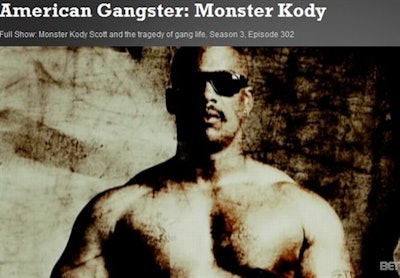
"Men in general judge more from appearance than from reality. All men have eyes, but few have the gift of penetration." — Machiavelli
"Polished brass will pass upon more people than rough gold." — Chesterfield
As a contributing technical advisor for the Black Entertainment Television's "American Gangster," I provided videotapes, photographs and information on the early Crip and Blood gangs in Los Angeles. When I viewed their interpretation of this gang history, I was angry. The documentary revised accepted history to glorify the criminal gang members and sensationalize the gangs. The truth became a victim of television ratings.
I wrote BET and the documentary crew and asked whether they could find any real heroes in the Black community rather than reaching down into the gutter to make one? BET is not the only culprit of this practice to glamorize gangsters and their gangs and revise their criminal histories. National Geographic, the Learning Channel and even the History Channel (my favorite) often sacrifice real history for ratings.
Why do some people feel the need to rewrite history to suit their needs? Many of these "documentaries" are only as good as their sources of information and the twisted interpretation of facts that the writers and producers invent. Unfortunately, this usually results in the truth winding up on the editing-room floor. Instead, self-serving versions are picked out and edited from carefully selected interviews of gang members, social scientists and politicians. These documentaries are often fictional histories based on events that never happened and written by men who were never there.
My grandfathers fought in Mexico's revolution. Both were Villistas in Pancho Villa's army of the north. This great Mexican patriot was also an outlaw bandit, smuggler and womanizer. Some of his methods to win the revolution were morally shocking. My parents didn't try to conceal Villa's faults to make him a more palatable hero in my eyes. The documentary makers of yesterday, even in his beloved Mexico, often vividly portrayed his faults.
It's much more entertaining to claim that Raymond Washington and "Tookie" Williams were inspired to form the Crips as a result of racial bigotry, a lack of jobs in the community, and the inspiration of political activists like the Black Panthers. It would be more truthful to say these two thugs were troubled and incorrigible youths who attracted other delinquents to their criminal organizations and used their numbers to kill and commit criminal acts against their own community.
This is no different in the Latino community when they attempt to glorify Ernesto "Che" Guevara and the mythological gang archetype "El Pachuco" into someone to be admired and emulated. As long as this heroization of these anti-heroes continues in poor communities, younger members of these communities will identify with these criminal groups rather than with mainstream American society. They will fixate on what they perceive makes them different, rather than what unites them with society.
Unwarranted criticism is often directed at people from the southern states suggesting that they are, to this day, still fighting the Civil War. Yet some of our college professors and news anchormen have no problem finding excuses for criminal gang behavior by blaming the past history of the gang member's race or culture for their current criminal behavior. These gang members never personally experienced this history in their lifetime and are often several generations removed from the alleged motivation. Slavery, the Mexican War and the Western frontier expansion are given as motivations for forming criminal gangs.
In my experience, most of the gang members I've interviewed have a limited knowledge of their own cultural history and even less of the history of the U.S. What little "history" they understand is usually of their particular gang, or the twisted history they learned later in prison. Greed, drug abuse, hate and the thirst for power are the primary motivators I've identified as reasons gangs are formed.
There's one other crucial factor I've found that motivates gangs — fear. This isn't fear of outside forces such as the government or police; it's the fear of other physically aggressive children and being ostracized by peers. Since children usually embrace outlaw gang culture before middle school, outside influences have little to do with it. Predators prowl every neighborhood and schoolyard and cause frightened kids to ban together as if threatened by bullies or sexual predators.
If such a kid feels unable to seek help from family, school authorities, or police, he'll seek protection from outlaw groups. He may also self-medicate his fear with drugs or alcohol. This behavior usually leads to a hardened psyche, violent behavior, and little empathy for anyone outside of his own pack of gangbangers.
So what caused "Monster" Kody of the Eight Trey Gangster Crips to be a monster? What motivated Richard "Night Stalker" Ramirez to slaughter his many innocent victims? Frankly, I don't care and it doesn't matter. Or I should say, it matters much less. What's much more important is that these criminals are not allowed to continue to victimize the community any longer. But who would make a documentary about that?
The true heroes in "American Gangland" are the victims and witnesses — the diligent investigators and prosecutors, and those unsung men and women in law enforcement that brought an end to each hoodlum's reign of terror.
Perhaps they remain unknown to the media documentarians and the public, but to us in law enforcement they should always remain the true heroes.
















